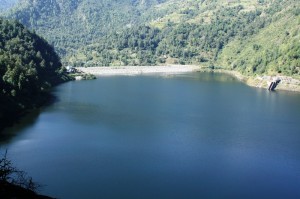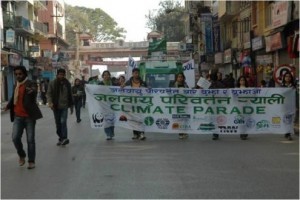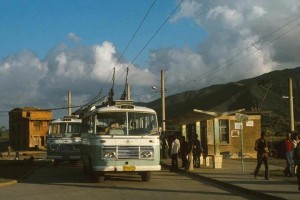In principle Nepal’s hydropower potential is impressive due to rugged mountain terrain from which snow and rain fed rivers produce significant amount of seasonal water flow. Owing to this natural hydrological processes, Nepal projected an image since 1970s that this country has one of the richest hydropower potential in the world through which the country would be able to alleviate poverty by bringing socio-economic transformation of the Nepali society. This potentiality was compared with the wealth of some oil-rich Gulf countries. After 40 years, the country is still struggling hard to meet the domestic energy demand, and the once popular national slogan that ‘Nepal is rich hydropower potential with 83000 MW’ is no more exist. Completed in late 1980s, Kulekhani hydro electricity plant (KHEP) became a showcase example of hydropower development, which is the first and only reservoir based hydropower plan in the country. A strong cloudburst of July 1993 seriously hit the plant as its penstock pipes were swept away and seriously reduced water holding capacity of the reservoir due to sediment deposit. In the project design document, such risks were ruled out and, the watershed has been identified as one of the safe zone from any extreme climatic events. The event had a huge impact on the other projects under pipeline. Since then 18 years have passed but no new reservoir-based hydropower plants are built. This is a rationale behind selection of KHEP as a study site for this case study.
In the context of growing impacts of climate change on water bodies and hydrologic cycles, study on prospects of reservoir based hydropower in Nepal are highly desirable. Storing water in reservoir is one of the globally recommended options to tackle climate change impacts on hydrologic cycle. In this case, the reservoir based hydropower that accumulates water during rainy season and produces electricity throughout the year, is one among the best options to address the current problem of seasonal power shortage. Even though, various reports has suggested further study on this sector, in Nepal, the effects of climate change on this valuable resource remain questionable.
This study mainly focuses on the hydrological and weather time series data in relationship with discharge, level of water in the reservoir and energy generation,. With the allowable 4 % error level, 30 years of rainfall data from 1980 to 2009 of nearby rainfall stations were analyzed. Findings show that, Kulekhani receives 78% of rainfall during monsoon (June-September), the water accumulated during this time is used throughout the year for generation of electricity. Kulekhani is one among the dryer region as compared with the national average and also the annual average rainfall of Kulekhani is decreasing at the rate of about 11.5 mm per year. There is gradual shift in seasons, i.e. rainy days are shifting towards pre-monsoon and winter towards post-monsoon. Among the four rainfall stations area, number of rainy days in Chisapani is decreasing by about 5 days on every 10 years (based on data between 1980 to 2009). The study shows that, annual average monsoon rainfall and numbers of rainy days at Kulekhani are decreasing, which signifies that monsoon is shortening that results same amount of rainfall on lesser number of days during monsoon at Kulekhani.
Likewise, temperature data of last 30 years (1975-2005), discharge of Kulekhani river of past fifteen years (1963 to 1977) and monthly data of reservoir level from 1988 to 2009 were analyzed during the study. Temperature of the watershed area has also increased relatively to data as mentioned in Initial National Communication submitted to UNFCCC by Government of Nepal. The river discharge and the level of water in the reservoir are declining. Other factors such as sediment deposit in reservoir, irregular maintenance of the machines and other infrastructure also contribute in declining the efficiency of system as well as life span of the Hydropower.
This result shows that winter is becoming dryer and rainy season is getting more and more rain that signifies essential need of reservoir based hydro powers also with greater water holding capacity in its reservoir. Similarly, there is temporal variation of different climate characteristics such as amount and intensity of rainfall, temperature and discharge in the river in study area. With the change in precepetatin pattern, Kulekhani in monsoon is receiving more rainfall on lesser number of days, this shows the chances of more sediment production in the watershed that lead to shorten lifespan of the reservoir. Also, there is possibility of low recharge of groundwater and early drying up spring sources that contribute to the Kulekhnani stream during dry season. That results more power shortage, so in future consideration should be taken while designing such hydropowers that could hold more water throughout the year and also with other various options to maintain the water level.
Hydropower station such as Kulekhani Hydropower needs a clear institutional direction and strategy to make it climate resilient.
Source: Dhakal M (2011). Climate Change Impacts on Reservoir based Hydropower Generation in Nepal: A case study of Kulekhani Hydropower Plant, Kathmandu, Nepal



